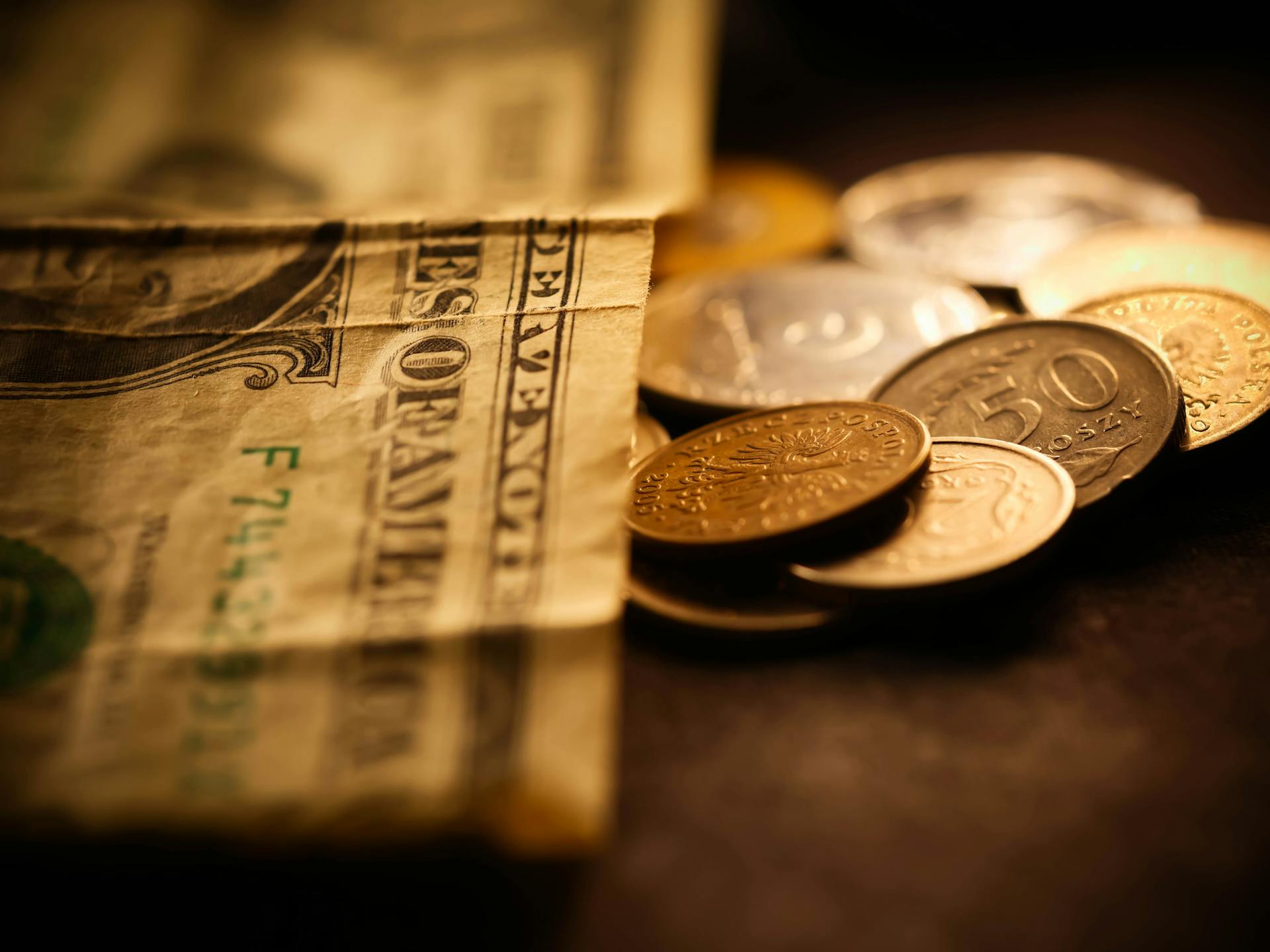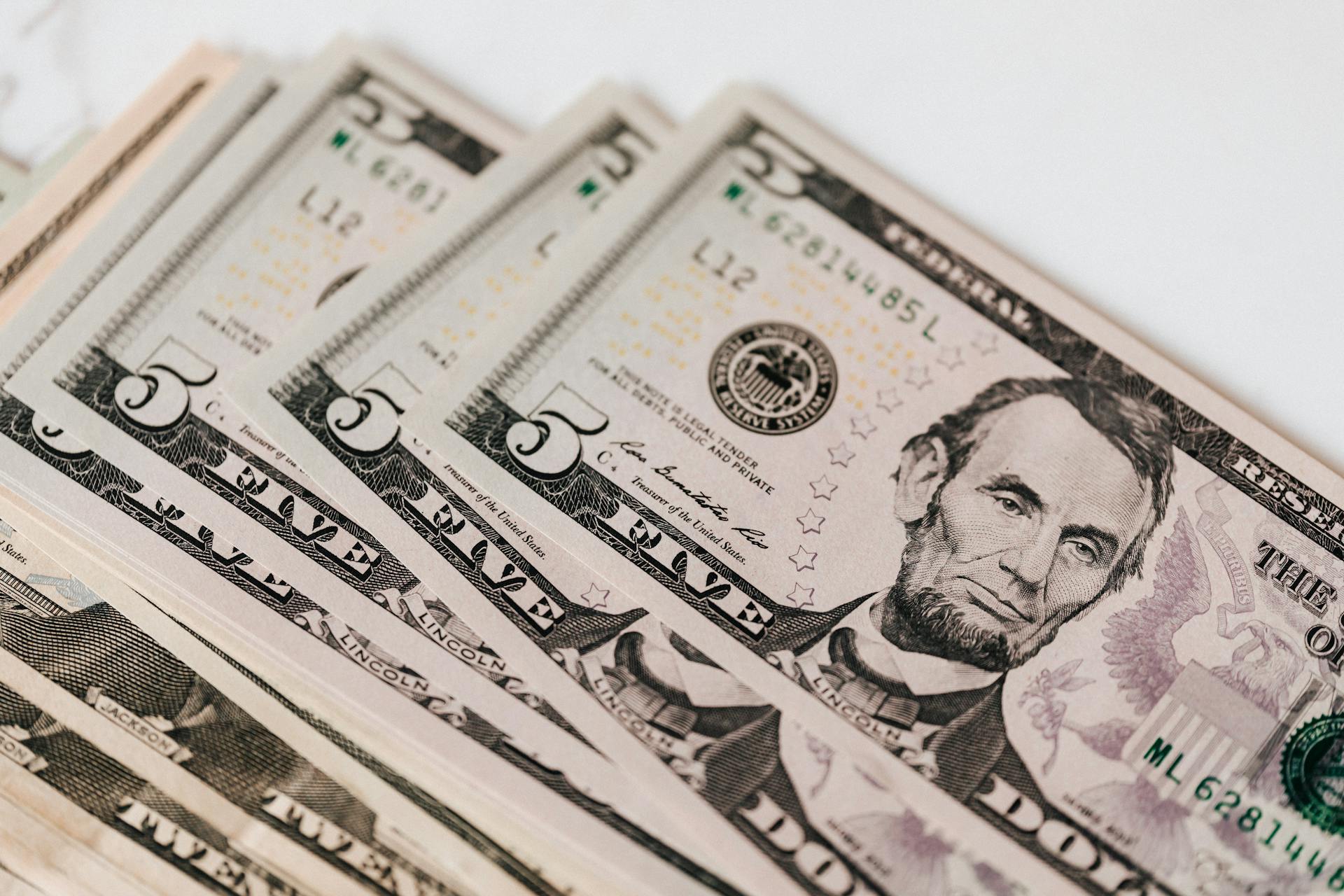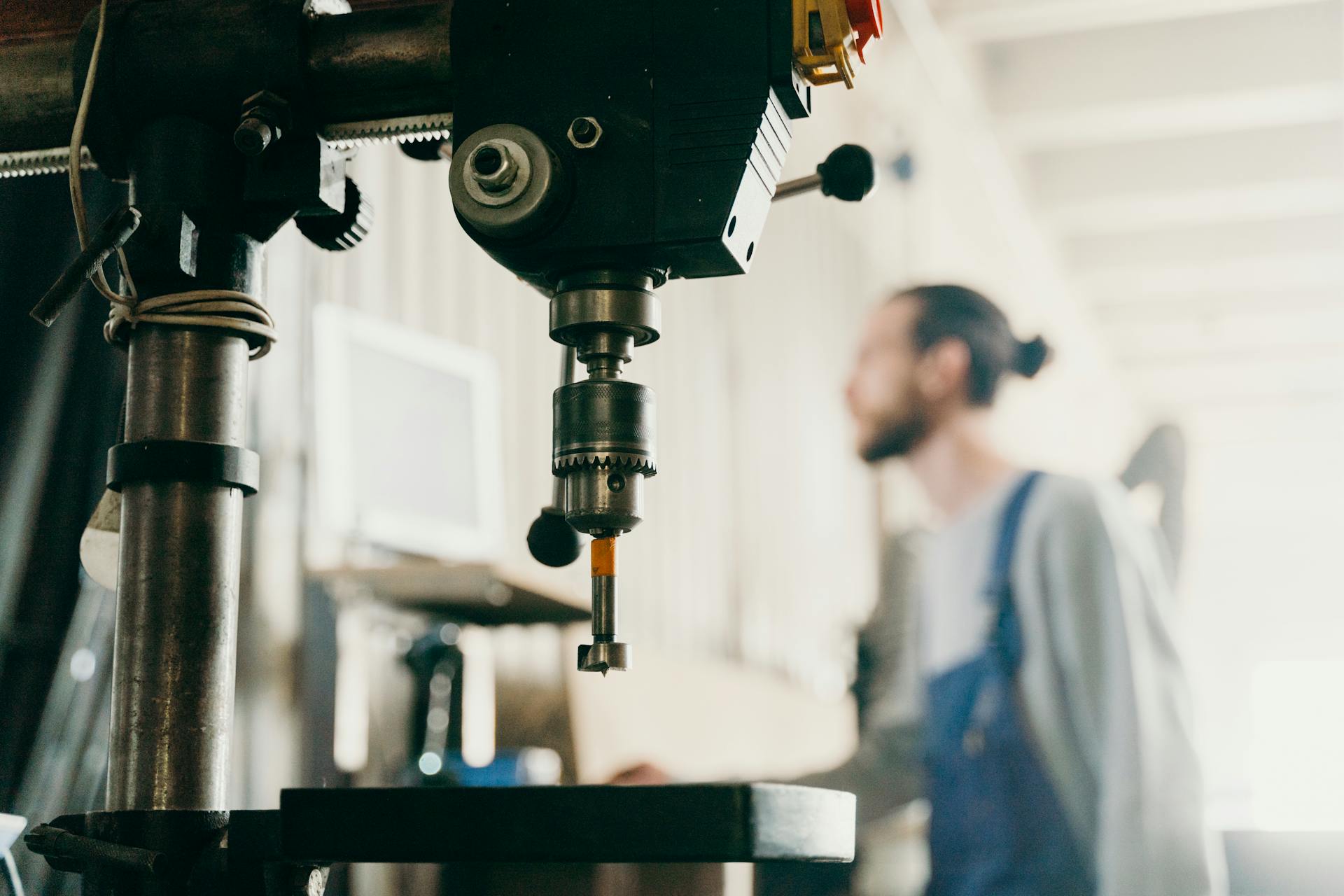
Depreciation is a crucial concept in accounting that helps businesses accurately reflect the value of their property, plant, and equipment assets over time. This means that the value of these assets decreases as they age and become less useful.
Assets such as buildings, vehicles, and machinery are subject to depreciation because their value decreases as they are used. For example, a car that's five years old is worth less than a brand new one.
Depreciation is a method of accounting that allows businesses to match the costs of their assets with the revenue they generate over their useful life. This helps businesses make informed decisions about investments and resource allocation.
The useful life of an asset determines how long it will be depreciated, which can range from a few years for vehicles to 20-30 years for buildings.
On a similar theme: What Are Current Asset Accounts
What Is Property and Equipment?
Property and equipment are the physical assets that a company owns, such as land, buildings, cars, computer equipment, and office furniture.
These assets are tangible, meaning you can touch and see them, and they're essential to a business's operation.
Some common examples of property and equipment include:
- Land
- Buildings (Office)
- Car
- Computer equipment
- Office furniture
You can't depreciate rented property, buildings, or equipment, so if you're renting a car or office space, you won't be able to write it off on your taxes.
To be considered a depreciable asset, it must meet certain criteria, such as having a useful life greater than a year and being used to generate profit.
Methods of Depreciation
There are four main methods of depreciation that companies use to calculate the value of their property, plant, and equipment assets over time. The straight-line method is the most common, where the value of the asset is split evenly over its useful life.
The double-declining balance method, also known as the 200%-declining-balance method, is an accelerated method that provides more depreciation expense in the early years of an asset's life and less in the later years. This method uses an asset's book value and multiplies it by two times the straight-line depreciation rate.
Suggestion: Straight Line Depreciation Chart
The sum-of-the-years'-digits method, or SYD, is another accelerated method that results in more depreciation expense in the early years of an asset's life and less in the later years. This method uses the sum of the digits in the years of an asset's useful life to calculate depreciation expense.
Here are the four main methods of depreciation:
- Straight-line method
- Double-declining balance method
- Sum-of-the-years'-digits method (SYD)
- Units of production method
These methods help companies accurately calculate the value of their assets and make informed decisions about their financial reporting and tax obligations.
What Determines Depreciation?
Depreciation is a complex calculation, but there are key factors that determine it. The useful life of an asset is a major factor, as seen in the example of a car that has a useful life of 5 years.
Straight-line depreciation is often used when the asset's value decreases evenly over its useful life. For instance, a $10,000 machine that lasts 5 years would depreciate by $2,000 each year.
For your interest: Over How Many Years Is a Commercial Property Depreciated
The salvage value of an asset, or its value at the end of its useful life, also plays a crucial role in determining depreciation. If an asset's salvage value is high, its depreciation will be lower.
The method of depreciation, such as straight-line or declining balance, can also impact the calculation. In the case of a $10,000 machine with a 5-year useful life, the straight-line method would result in a depreciation of $2,000 per year.
In some cases, the cost of replacing an asset can also be a factor in determining depreciation. If an asset is easily replaceable, its depreciation may be higher.
The rate of depreciation can vary depending on the asset's class. For example, a car is classified as a 5-year asset, while a building is classified as a 20-year asset.
Double-Declining Balance
The double-declining balance method is an accelerated depreciation method that reports more depreciation expense in the early years of an asset's life and less in the later years.
This method is also known as the 200%-declining-balance method, meaning the depreciation rate is double the straight-line rate. For example, if an asset has a 10-year useful life, the straight-line rate of depreciation is 10%, and the double-declining rate would be 20%.
The double-declining balance method is commonly used for assets that quickly lose their value in the early years of their estimated useful life, such as vehicles, computers, and electronics.
To calculate double-declining balance depreciation, you multiply the straight-line depreciation rate by 2. In the double-declining balance method, the asset's estimated salvage value is initially ignored in the calculations, but depreciation will stop when the asset's book value is equal to the estimated salvage value.
Here's a step-by-step example of how to calculate double-declining balance depreciation:
Note that in the final year, you don't multiply the book value (depreciable amount) with an accelerated depreciation rate. You only deduct the residual value from the depreciable amount.
The double-declining balance method can substantially reduce both taxable income and tax payments for a certain time. However, if you're a publicly owned company that wants to appear more profitable in the eyes of investors and stakeholders, you may want to use the straight-line method instead.
Methods of Depreciation
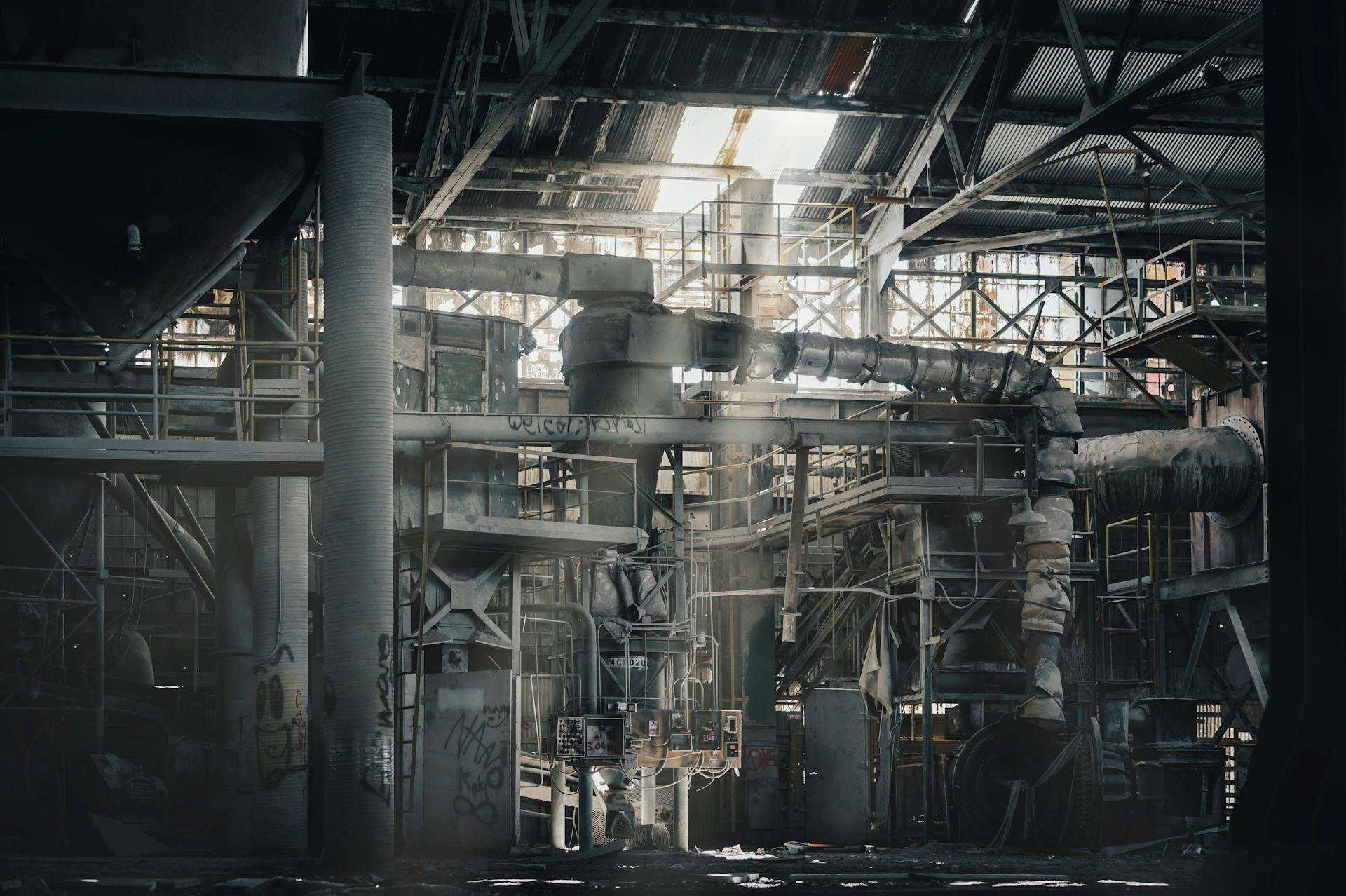
Depreciation is a complex process, and it's essential to understand the methods used to calculate it. There are several methods of depreciation, and accountants must choose the one that best suits the company's needs.
One of the most common methods is the straight-line method, which involves dividing the cost of an asset by its useful life to determine the annual depreciation expense. However, this method can be affected by changes in an asset's estimated salvage value or useful life.
A change in an asset's estimated salvage value can have a significant impact on depreciation expense. If the estimated salvage value decreases, the depreciation expense will increase, and vice versa. This is because the estimated salvage value is used to calculate the asset's remaining value at the end of its useful life.
The useful life of an asset is also an estimate, and it can be affected by various factors, such as technological advancements or changes in market conditions. For example, a company may estimate that a piece of equipment will have a useful life of 7 years, but if it realizes that the equipment will only last for 6 years, the depreciation expense will be affected.
Here are some common methods of depreciation that accountants use:
- Units-of-activity (or units of production)
- Double-declining-balance
- Sum-of-the-years’-digits
These methods can be used in conjunction with the straight-line method to calculate depreciation expense. However, the choice of method depends on the specific circumstances of the asset and the company.
Calculating Depreciation
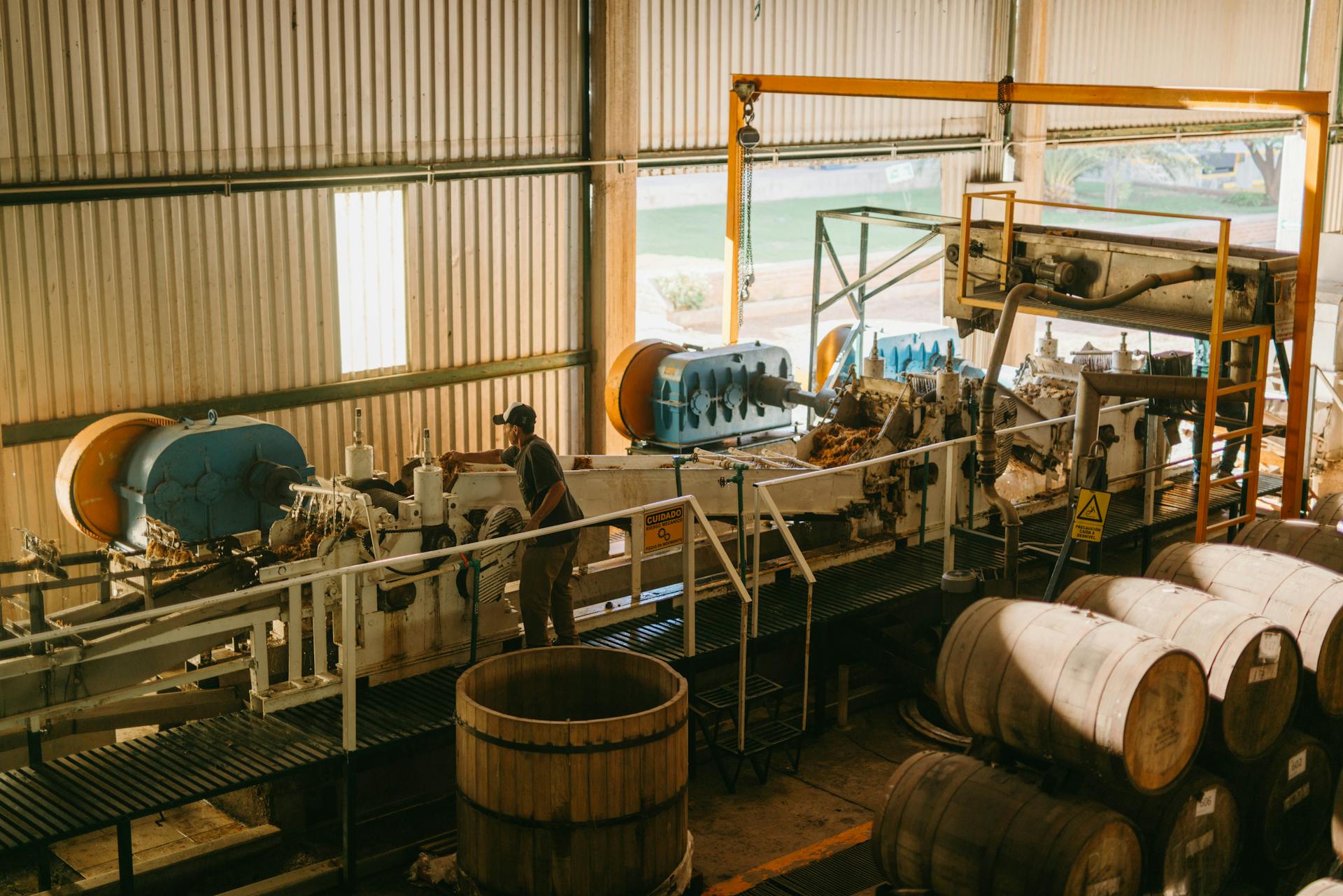
Calculating depreciation can be a bit tricky, but it's actually quite straightforward once you understand the basics. There are two main methods for calculating depreciation: straight-line and declining balance.
The straight-line method is the simplest method, where the amount of expense is the same each year over the useful life of the asset. To calculate straight-line depreciation, you divide the cost of the asset by the number of years it will be used. For example, if an asset costs $10,500 and will be used for 5 years, the straight-line depreciation would be $2,100 per year.
Depreciation is calculated using the following formula: (Asset's cost - estimated salvage value) / estimated years of useful life. This formula is commonly used to calculate depreciation expense for a year.
There are several methods of calculating depreciation, including the straight-line method, units-of-activity or units-of-production, double-declining-balance (DDB), and sum-of-the-years'-digits (SYD). Each method has its own advantages and disadvantages, and the choice of method depends on the specific circumstances of the asset.
Broaden your view: Salvage Value Formula
The double-declining-balance (DDB) method is an accelerated method of depreciation, which means it results in more depreciation expense in the early years of the asset's useful life and less in the later years. To calculate DDB depreciation, you multiply the asset's book value by the DDB rate, which is typically 200% of the straight-line rate.
Here's a summary of the different depreciation methods:
The choice of depreciation method depends on the specific circumstances of the asset, including its useful life, cost, and estimated salvage value. By understanding the different methods of calculating depreciation, you can make informed decisions about how to depreciate your assets over time.
Recording and Accounting
The cost of an asset is recorded in the accounting records at its initial cost, which includes all necessary costs to get the asset in place and ready for use. This cost is typically recorded in the general ledger account Equipment.
The cost of an asset can be broken down into several components, including the purchase price, transportation costs, and any additional expenses to get the asset in working condition. For example, a company may pay $10,000 to purchase used equipment, $2,000 to transport it, and $5,000 to get it in working condition, resulting in a total cost of $17,000.
Depreciation is recorded in a company's accounts with an adjusting entry that is typically made at the end of each accounting period. This entry involves debiting Depreciation Expense and crediting Accumulated Depreciation.
Here's a breakdown of the accounts involved in recording depreciation:
The adjusting entry for depreciation is typically made at the end of each accounting period, and the amount of depreciation expense is calculated using the straight-line method or another depreciation method chosen by the company.
How They Are Recorded
Recording assets in accounting is a straightforward process. The asset is initially recorded in the accounting records at its cost, which includes all costs necessary to get the asset in place and ready for use.
For example, if a company purchases used equipment for $10,000 and spends an additional $2,000 to transport it to its location, the total cost of the equipment would be $17,000. This cost is recorded in the Equipment account.
Expand your knowledge: Depreciated Meaning in Accounting
The balance in the Equipment account is then reported on the company's balance sheet under the asset heading property, plant and equipment.
To illustrate this, consider the following:
Each asset's cost is recorded separately in its own account, providing a clear picture of the company's assets.
The cost of an asset is not just the initial purchase price, but also includes any additional costs required to get the asset in working condition.
Recording Straight-Line
Recording Straight-Line Depreciation is a straightforward process. You calculate the depreciation expense by dividing the cost of the asset by the number of years it is expected to be used.
The straight-line method is the simplest way to depreciate fixed assets. It assumes that the asset loses value at a constant rate over its useful life. For example, if a company purchases equipment for $10,500 with an estimated salvage value of $500 and a useful life of 5 years, the annual depreciation expense would be $2,000.
To calculate the depreciation expense, you need to know the cost of the asset, its salvage value, and its useful life. You can use the formula: Depreciation Expense = (Cost - Salvage Value) / Useful Life.
Here's an example of how to calculate the depreciation expense using the straight-line method:
The straight-line method provides a clear and consistent way to record depreciation expense over the useful life of an asset. It's a widely used method that is easy to understand and calculate.
Automate Your Workflow with Deskera
You can automate your depreciation schedule with Deskera's cloud accounting software, saving you time and effort.
With Deskera, it only takes a few seconds to set up and automate your asset depreciation, making it a great option for businesses that want to streamline their accounting processes.
To automate your workflow, simply enter the name of the fixed asset you want to depreciate, and the software will handle the rest.
The Depreciation Schedule feature in Deskera automatically creates your depreciation schedule and posts the correct journal entry, with the corresponding debit and credit balances.
This saves you from manually calculating and recording your depreciation schedules by hand or on Excel spreadsheets.
Here's an interesting read: Is Software Amortized or Depreciated
Depreciation Methods and Adjustments
There are several methods of calculating depreciation, including the straight-line method, units-of-activity or units-of-production, double-declining-balance (DDB), and sum-of-the-years'-digits (SYD).
The straight-line method is the most common method used for computing and reporting depreciation on a company's financial statements. It involves calculating depreciation expense by dividing the asset's cost by its useful life.
The DDB method is an accelerated method of depreciation that provides more depreciation expense in the early years of an asset's useful life and less in the later years. The DDB rate is calculated by doubling the straight-line rate of depreciation. For example, if an asset's estimated useful life is 10 years, the DDB rate would be 20%.
The SYD method is another accelerated method of depreciation that results in more depreciation expense in the early years of an asset's useful life and less in the later years. The sum of the years' digits is calculated by adding the digits in the years of an asset's useful life.
Here's a brief comparison of the three accelerated methods:
It's worth noting that the total amount of depreciation expense over the useful life of an asset cannot exceed the asset's depreciable cost (asset's cost minus its estimated salvage value).
Sum-of-the-Years'-Digits Method
The Sum-of-the-Years'-Digits method is an accelerated depreciation method that results in more depreciation expense in the early years of an asset's useful life and less in the later years.
This method involves calculating the sum of the digits in the asset's useful life, which is the total of the years from 1 to the asset's useful life. For example, if an asset has a useful life of 10 years, the sum of the digits is 1 + 2 + 3 + 4 + 5 + 6 + 7 + 8 + 9 + 10 = 55.
The formula for calculating the sum of the digits is n(n+1)/2, where n is the number of years in the asset's useful life. Using this formula, we can calculate the sum of the digits for an asset with a 10-year useful life as 10(10+1)/2 = 55.
The depreciation expense for each year is calculated by dividing the depreciable cost by the sum of the digits and multiplying by the corresponding digit. For example, if an asset has a depreciable cost of $110,000 and a sum of the digits of 55, the depreciation expense for the first year would be 10/55 x $110,000 = $20,000.
Here is an example of how the Sum-of-the-Years'-Digits method works:
This method is useful for assets that depreciate rapidly in the early years of their useful life. By using the Sum-of-the-Years'-Digits method, companies can accurately reflect the decline in value of their assets over time.
On a similar theme: Net Operating Assets Definition
When an Estimated Amount Changes
If there's a significant change in an asset's estimated salvage value and/or useful life, it can impact depreciation expense in the current and remaining accounting years. This change is not considered an accounting error, so previously distributed financial statements remain unchanged.
A change in estimated salvage value or useful life affects depreciation expense in the current and remaining years of the asset's useful life. This means that the financial statements for those years will be updated to reflect the new depreciation amounts.
For example, if a company originally estimated an asset's useful life to be 7 years, but later realizes it will only last 6 years, the change in estimated useful life will affect depreciation expense in the current and remaining years. In this case, the depreciation already reported for previous years cannot be changed, but the change will impact depreciation expense in the next two years.
The change in estimated useful life will result in a new amount of depreciation expense in the current accounting year and in the remaining years of the asset's useful life. This means that the company will need to update its financial statements to reflect the new depreciation amounts.
Here's a summary of the effects of a change in estimated salvage value or useful life:
Note that the depreciation amounts recorded in previous years remain unchanged, but the change in estimated useful life will impact depreciation expense in the next two years.
Repairs vs. Capital Expenditures
Repairs and maintenance expenses are reported immediately on the financial statements as expenses. Routine maintenance and tune-ups are examples of expenses that fall into this category.
If an expenditure merely repairs a broken machine, it's reported as an expense, not as an asset. This means the cost is not depreciated over time.
Capital expenditures, on the other hand, are amounts spent to acquire, expand, or improve assets. These costs are recorded as assets and depreciated over the remaining useful life of the asset.
The distinction between repairs and capital expenditures is crucial, as it affects how costs are reported on the financial statements.
Check this out: Why Is Land Not Depreciated
Tax and Accounting Considerations
Tax and Accounting Considerations are crucial when it comes to depreciating property, plant, and equipment assets. A tax depreciation schedule is a detailed document that outlines the depreciation of assets for tax purposes, used to calculate allowable tax deductions over an asset's useful life.
Accurate reporting is essential, as it helps prepare accurate financial statements by reflecting the decrease in the value of assets. This is achieved through a tax depreciation schedule, which tracks depreciation expenses, accumulated depreciation, and book value over time.
The straight-line method is a common approach to calculating depreciation. In this example, office equipment with an initial cost of $10,000 and a useful life of 5 years has an annual depreciation expense of $2,000.
Here's a breakdown of the key components of a tax depreciation schedule:
This schedule helps businesses comply with tax regulations and optimize their tax liabilities by accurately tracking depreciation expenses and accumulated depreciation over the asset's life.
Frequently Asked Questions
Are all plant assets depreciated?
Yes, all plant assets are depreciated. They are depreciated using the straight-line method over a useful life determined by the Office of the Comptroller.
Sources
- https://hectorassetmanager.com/blog/what-is-depreciation-fixed-asset/
- https://www.accountingcoach.com/depreciation/explanation
- https://www.deskera.com/blog/depreciation-schedule/
- https://www.accaglobal.com/gb/en/student/exam-support-resources/fundamentals-exams-study-resources/f7/technical-articles/ppe.html
- https://www.cptc.edu/about/policies/accounting-fixed-assets
Featured Images: pexels.com

